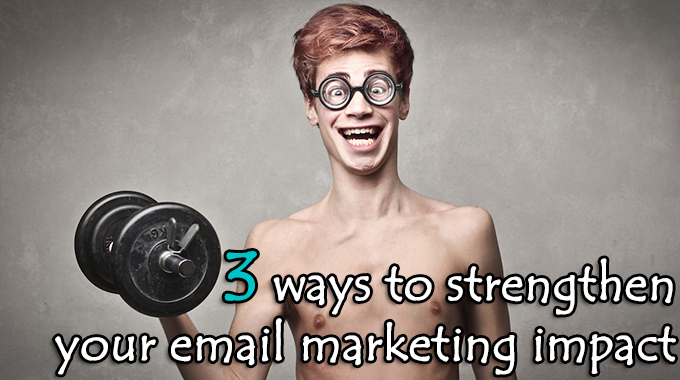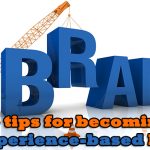3 ways to strengthen your email marketing impact

Despite your best efforts to keep customers up-to-date with the latest brand news and offers, you’re seeing flat lined open or click-through rates, an unsubscribe mass exodus, and — worst of all — emails tagged to funnel directly to your customers’ spam folders (yikes). These are all sure signs that your email campaigns have stopped resonating with your audience and are, instead, starting to offend them. That’s because, while frequency of interaction can build loyalty and brand advocacy, there’s such a thing as being too attentive.
And if you’re being too attentive with the wrong kind of attention? That’s a relationship deal breaker on every level.
Too much of the wrong content delivered to the wrong people at the wrong time is better known in email marketing speak as list fatigue. The good news is your problem is fairly easy to diagnose. Even better: it’s fairly easy to fix, too. And fixing it should definitely be a priority — according to Econsultancy’s latest census, email marketing continues to be the leading channel for delivering ROI, ranking above SEO, PPC, content marketing, and social media.
Here are three major reasons your customers have lost interest in your emails, and what you can do to make it right again.
1. It’s like you don’t even know me.
The most integral part to any strategy — be that business plan or marketing plan — is doing the legwork to define and identify exactly who it is you’re trying to reach, what kinds of content they love, and when/where/how is the best time to capture their attention and deliver value. If you haven’t, there’s your first (and probably biggest) mistake. And because a whopping 60 percent of marketers admit that their biggest barrier to effective email marketing is the quality of their email database, it’s likely that many are skipping or skimping on this critical step. Unfortunately, your customers will notice immediately if you haven’t taken the time to do this; receiving content that’s canned or is irrelevant is an obvious indication of just how much you don’t care about their individual experiences — and they’ll show their displeasure by ending the relationship.
- Map your customer’s journey. Defining all the important touchpoints along your sales funnel will help you suss out the nuances and influences that drive your customer’s decision-making, which in turn will help you develop the most effective messaging and timing. And since it’s likely that your lists of customers (both existing and potential) aren’t presorted by where they are in the sales cycle, this will help you to begin the next most important process…
- Segment your lists. While your customers might all be interested in your product or service, that’s likely where their similarities end; your messaging, strategy, and cadence needs to be aligned to where your customers are along their journey so that every interaction with you is relevant and valuable to each of them. Segmenting your lists enables you to further refine your content and ensure that the right stuff is going out to the right people at the right time, which makes your outreach more effective in capturing and retaining their attention as your relationship evolves.
- Test. Retest. Optimize. Defining and identifying your customer’s journey is essential for establishing a solid foundation to strategize campaigns, but sometimes no matter how much you learn, you just can’t predict what customers will engage with most. The best part about messaging, email length, cadence—and everything else about email marketing — is that it’s all easily testable. Create different versions of subject lines and test them against each other; create one long and one short email newsletter and see which resonates the best. Testing will help you focus your strategies on what you know works best for your target audience, so you can optimize your campaigns and deliver higher quality content at every touchpoint.
2. I just need some space.
While almost 70 percent of consumers want to communicate with brands via email rather than direct mail or text, frequency of interaction is a key consideration; bombarding your customers is just as bad as forgetting about them. Unfortunately, getting the cadence right can be tricky. According to MarketingSherpa research, 86 percent of U.S. adults would like to receive promo emails at least monthly, but 15 percent would like to receive promotional emails every day.
That’s a pretty big difference.
Mapping your customer’s journey and segmenting your lists will help you define an appropriate email frequency based on specific customer needs or expectations. From there, you can test to see what works best and identify your email frequency sweet-spot, per segment.
- Start with best practices. You’ll be well-served to tap into the wisdom and tactics of those who’ve blazed the trail before you, especially if you have no idea where to begin. Look into case studies, research, and insight from industry experts like Hubspot and Buffer. When it comes to email marketing, small things can make a big difference—we’re talking as small as a few characters’ worth of elements, like how subject line length, day of the week sent, and formatting can and will affect clicks and conversions. Find out what’s tried and true so you have a foundation for developing your own strategies.
- Define a schedule (and stick with it). When customers sign up to receive email news and updates about your brand, use that initial welcome email (you’ve created one of those, right?) to tell them just what they’ll be receiving and how often. If customers know what they’re getting from the outset, they’ll not only expect to see you in their inboxes on a regular basis, they’ll also be less likely to feel smothered or exploited by your agreed-upon cadence. You can also use your welcome email to ask them specifically about their contact preferences, and save yourself from guesswork.
- Don’t rely solely on automation. Email marketing automation is an incredible tool that helps marketers automate many of the tedious processes involved with identifying and nurturing sales leads. That said, it’s not like a Crock-Pot — you can’t just set it and forget it. If you’ve defined your customer journey touchpoints, make sure you’re consistently using them to monitor the ongoing effectiveness of your campaigns. And be prepared to make quick adjustments to messaging or email frequency as soon as click rates drop — something you can’t do by depending on automation alone.
- Suggest a break rather than a breakup. An increase in the number of customers opting out (or unsubscribing) from marketing emails can be an indication that they’re put off by the frequency of content filling their inboxes. However, hitting unsubscribe doesn’t have to be their only recourse. According to a recent BlueHornet survey, 47.1 percent of customers would rather “opt-down” and receive fewer emails than unsubscribe. Not only will giving your customers a similar option help keep them engaged by allowing them to customize their interaction with your brand, it will also help you further refine the optimal frequency for your specific audience.
3. The thrill is gone.
If the first reason for customers hitting the unsubscribe button is frequency, the second is almost always bad or irrelevant content. By now you should have already made several passes through thecustomer journey map to define Moments of Value for your customers, and used that data to start developing content that delivers on them. Remember: you’re vying for the attention of a customer who may be accustomed to receiving more promotional emails a month than personal emails (nearly 54 percent of their total monthly emails received!) — you better make sure that your emails are the ones they open.
- Get personal. Customers don’t want to just buy from companies, they want to connect with the people and personalities behind the brands — and they expect the same sort of consideration. Personalized content helps to show that you know, understand, and care about the people whose inboxes you’re occupying. Whether that means providing exclusive downloadable content based on their needs in the sales funnel or sending out personalized birthday promotions, that effort to keep the content personal and relevant will go a long way. In fact, Experian research finds that birthday emails have a 481 percent higher transaction rate than promotional emails! Try thinking of ways to harness and deliver that level of customization to delight your customers all year round.
- Make a killer first impression. The truth is, it won’t matter how amazing and lovingly crafted your content is if nobody will open your email to see it. Since your subject line is typically the first thing customers see (and judge), you’ll need to be able to win them over quickly — preferably in 50 characters or less. It’s also important to be straightforward and not mislead your audience with “clickbait”-style subject lines. If your customer clicks to open an email and feels misled by the subject line related to the content inside, you may just lose their trust for good.
- Optimize for mobile. BlueHornet research indicates that 67.2 percent of consumers now use a smartphone to check their email. Why is this important? Because of this: 42 percent of subscribers delete emails that don’t display correctly on mobile phones. Again, it won’t matter how awesome your content is if nobody will (or can) open your email to see it; if you’re not taking into account where and when your customers might be accessing your emails, and optimizing that content accordingly, you’re missing a vital component to your overall email campaign success.
Your customers want to stay connected through email. In fact, Forrester research finds that U.S. adults are twice as likely to sign up for emails to stay in touch with your brand than to interact with you on Facebook. Don’t let something as easily reversible—and preventable—as list fatigue spoil a perfectly good relationship. Staying in tune with your customers’ wants and needs, providing them with options, and customizing their experience whenever possible are all things that will help maximize their delight and reinforce their long-term devotion to your brand.
___
by ZUBIN MOWLAVI

